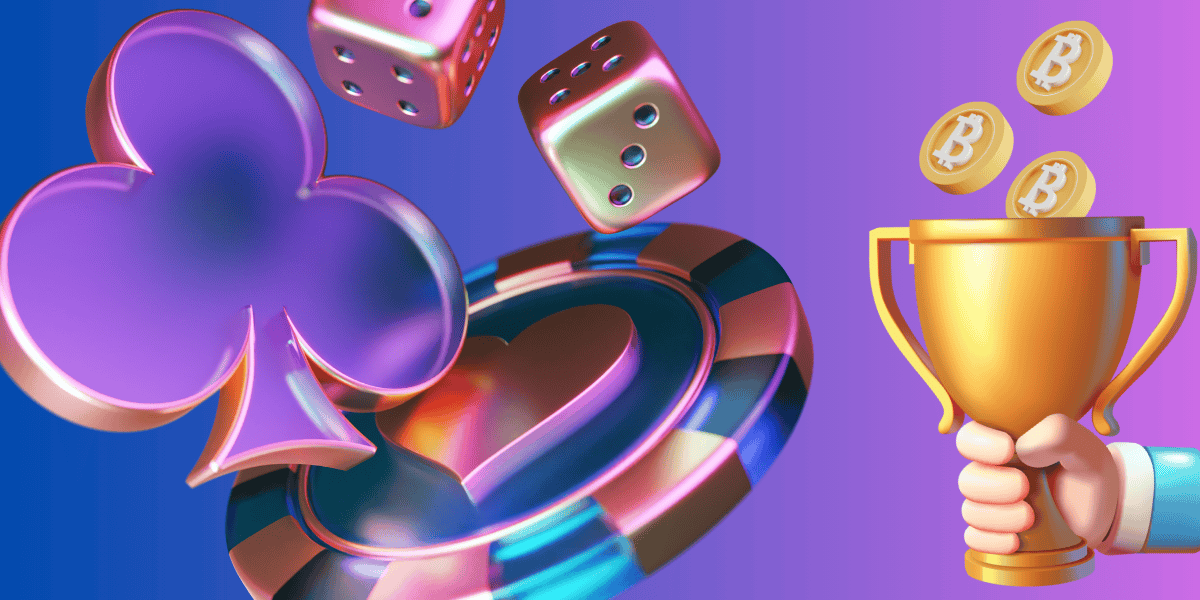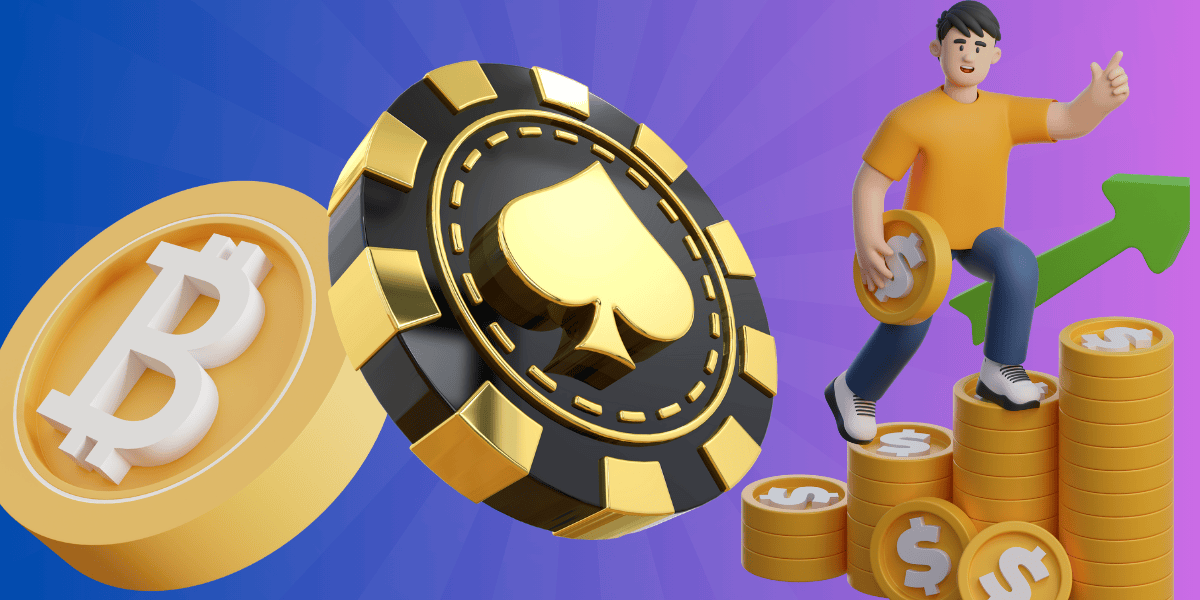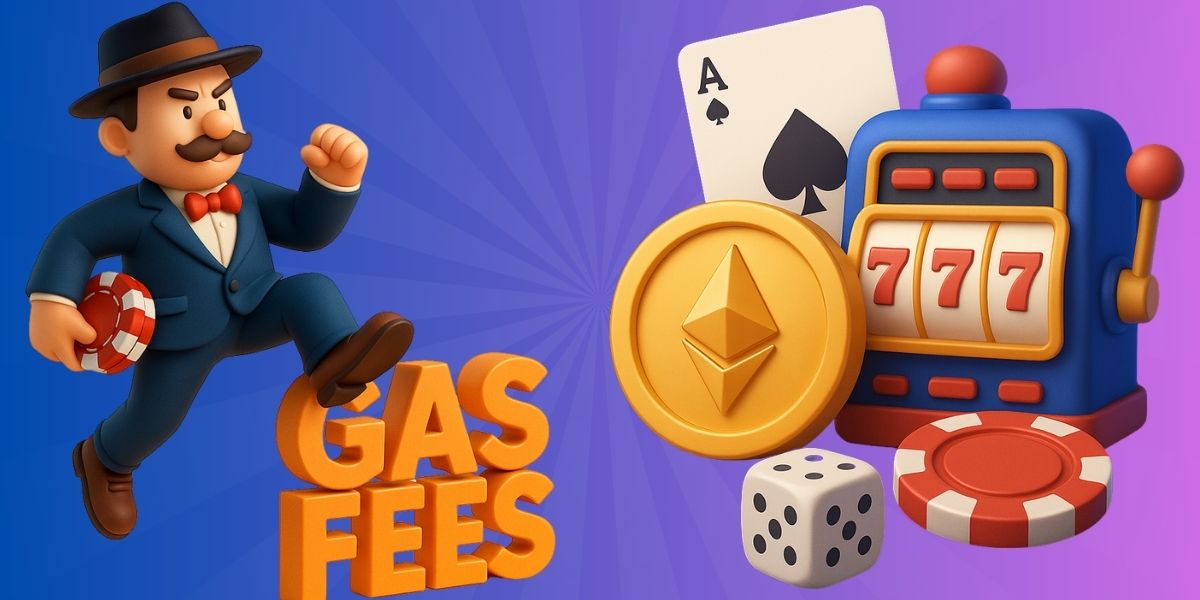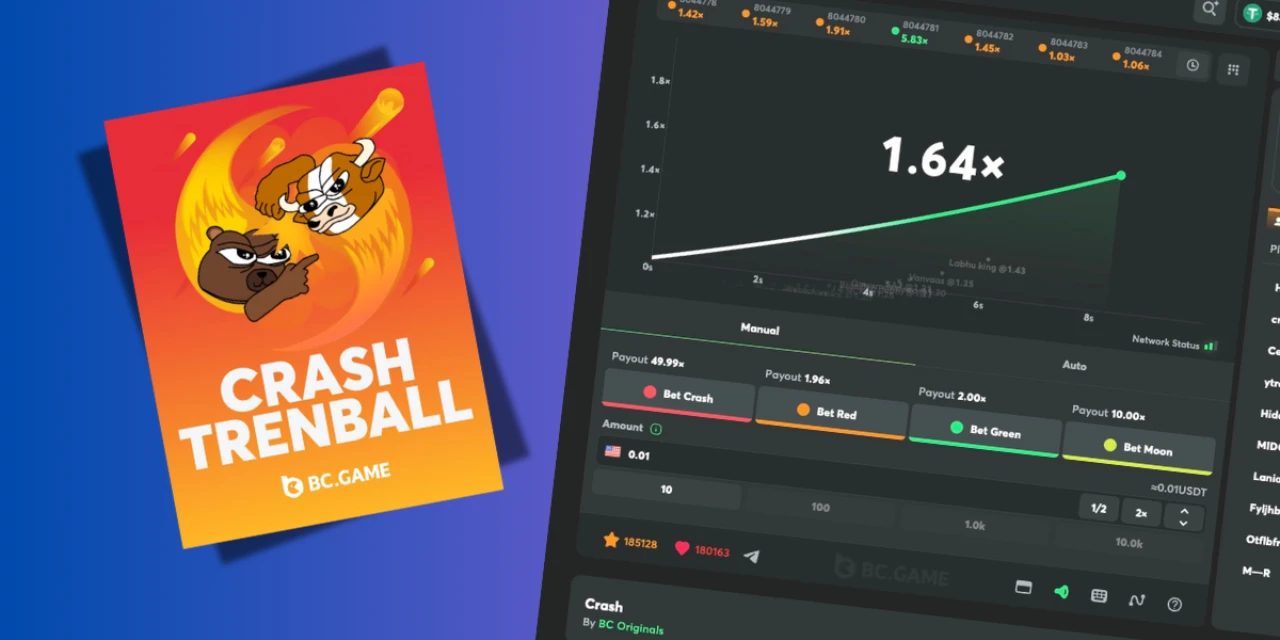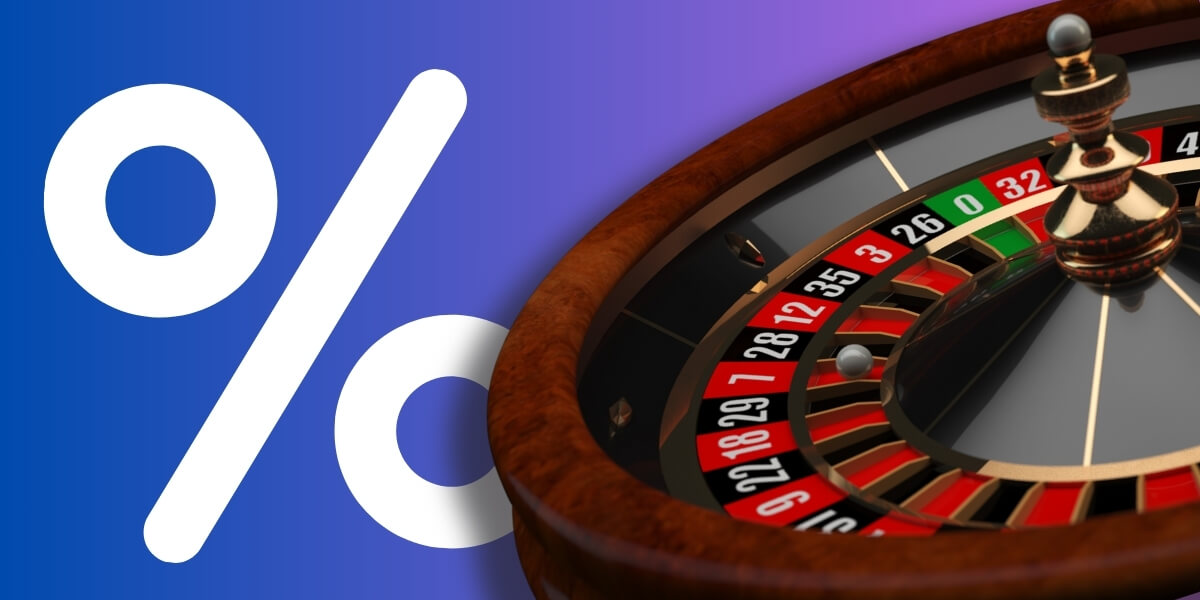
Understanding house edge and RTP at crypto casinos (2026 guide)
If you’ve ever played at an online casino before, you may have wondered how the house makes a profit.
After all, “the house always wins.” But how?
There are many myths about how casinos make their money. Some believe games are always rigged to lose. Others think games have paying patterns: they ‘unlock’ only after a fixed amount of rounds and then ‘lock’ after paying out big.
At reputable crypto casinos, those myths are unfounded. For the most part, legitimate casino games have unbiased and random results. And yet, casinos do have an advantage that keeps them profitable.
This advantage is called the ‘house edge’ and it’s often expressed as a Return-to-Player (RTP) percentage.
House Edge: In a Nutshell
The house edge is the percentage of each bet that the casino expects to keep over the long run.
From traditional land-based casinos to online bookmakers and modern cryptocurrency casinos, all gambling operators profit from their house edge, but some more so than others.
In this guide, you will learn how casino games can remain random and fair while giving an advantage, or edge, to the casino.
Does the house always win? Yes. But so can you.
What is a house edge?
The concept of house edge is relatively simple: it’s a mathematical advantage that casinos keep for themselves to remain profitable.
This advantage translates into an average loss percentage you can expect from your initial bet.
To understand how it works, let’s look at how it’s applied to a standard European Roulette with 37 numbers, including the zero:
- The ball can fall into any of the available 37 slots.
- Consequently, you have a 37-to-1 chance of winning the round.
- However, the casino pays out at a 36-to-1 rate (with a house edge of 2.7%) for a single-number bet.
- Therefore, the risk that you take is, in the long run, higher than the reward.
It’s important to note that, while that 2.7% edge is programmed, the outcome of every spin is still random.
Because luck isn’t linear or predictable, this means that you can still win more than you spent or lose more than the house edge.
- You could win a 37-to-1 single bet on your first try, getting 36 BTC from a 1 BTC bet, for instance.
- Or, you could play 100 rounds and not win a single bet.
Since every game is random, every valid outcome (however unlikely) is possible in every single round. Once-in-a-lifetime wins can happen, lucky players can have winning streaks, but you are still statistically more likely to lose in the long run (after all, the house always wins).
Even if you win big, the casino itself is likely to profit from all the game rounds played by all players, so it’s in its best interest to keep results as random as possible, allowing for big, life-changing wins.
After all, the randomness, combined with the possibility of achieving that once-in-a-lifetime lucky strike, is what makes gambling so thrilling.
House Edge vs RTP
A house edge and the Return to Player (RTP) are closely related concepts in gambling, but they describe opposite sides of the same coin.
House Edge vs RTP?
Both metrics provide insight into the expected performance of a game, but from different perspectives. High RTP = low house edge.
Here’s what I mean:
- House Edge is the percentage of each bet that the casino expects to keep over the long run. It’s a measure of the game’s fairness (or lack thereof) from the perspective of the player, indicating the advantage the house (casino) has over the players. A game with a higher house edge means more profit for the casino and less favorable odds for the player. For example, if a game has a house edge of 5%, the casino expects to make an average profit of $5 for every $100 wagered over time.
- Return to Player (RTP) is the flip side – it shows the percentage of the total amount of money wagered by players that a game is expected to pay back to players over time. It’s essentially a measure of the game’s payout ratio. If a game has an RTP of 95%, it means that over the long term, players can expect to get back $95 for every $100 wagered.
All in all, RTP and house edge are mathematically related: RTP = 100% – House Edge.
The relationship means that if you know one, you can easily calculate the other.
Why is house edge important?
Knowing the house edge of a game can be a powerful tool:
- It will tell you how much the game pays out in the long run.
- It can help you compare similar games.
- It can moderate your expectations and help you gamble safer (especially in the long run).
We can’t understate the importance of understanding how the house edge will always benefit the casino over time. That’s why we strongly discourage chasing losses and pushing your luck on big wins.
Low house edge casino games
From traditional slot machines to sports bets and even government-run lotteries, all games of chance have a house edge. You can’t escape it.
However, some games do have reduced margins, on average, compared to others:
- Blackjack – This live casino classic is famous for its low house edge: often 1% or even lower. What’s more, employing the right blackjack strategies can further increase the odds in your favor.
- Baccarat – If you’re into card games, you’re in luck: baccarat games feature house edges between only 1%-2% at most blockchain casinos.
- European Roulette – As we mentioned above, the edge for a European Roulette is 2.7%: almost half what you get at a double-zero American Roulette wheel (5.26%).
- Crash – The game that mimics the ebbs and flows of the cryptocurrency market is almost exclusively found at blockchain casinos. For the most part, Crash games have a 1% house edge.
- Video Poker – Despite not being as popular or, perhaps, engaging as real poker tournaments, video poker games have the advantage of having a very low edge, often around 1%.
- Plinko – While Plinko odds vary, you’ll find plenty of in-house Plinko games with house edges as low as 1%.
- High RTP Slots – Online slot machines tend to have a more advantageous house edge than mechanical ones due to their high RTP, which occasionally can go above 97%. At games such as NetEnt’s Blood Suckers or Thunderkick‘s 1429 Uncharted Seas, the house edge can go below 3%, but higher numbers are more common. Naturally, volatility plays a big role here, too.
- Boosted Odds – Although sports bets often don’t call it house edge, they have a similar way of reducing the risk: the house margin. The names are different, but the concept is similar: bookmakers offer slightly higher odds than the real calculated outcome of a sports event. With boosted odds markets, sports betting sites reduce their margin, offering better odds to their customers and more value for money.
Choosing games with a lower house edge is always the safest option since you will, theoretically, lose less money in the long run.
However, games with a high RTP also tend to have more modest prizes. Big jackpots, for instance, are often reserved for low RTP games.
ADVANTAGES OF HIGH HOUSE EDGE GAMES
Playing games with the lowest edge isn’t always the way to go. If you’re looking for a thrilling win, low RTP games can often be your best choice.
Are house edges lower in crypto casinos?
No, and this is a common misconception in the crypto gambling biz. Many affiliate sites list ‘lower house edges’ as an inherent advantage of crypto casinos, when this really isn’t the case.
Plus, contrary to popular belief, there’s no such thing as a ‘low house edge’ casino. The casino itself doesn’t have a house edge, the games do.
Still, there is a reason you’ll typically find higher RTP options at Bitcoin casinos:
Internally developed games

Unlike most ‘regular’ online casinos, blockchain casinos and gambling Dapps often develop their own games so they can provide a fully transparent and fair gaming experience to their players.
The fact is, games from popular studios are costly for the casinos, which pay the operators a percentage of the players’ stakes. Internally developed games can significantly lower those costs. On the other side of the coin, these in-house games understandably have smaller maximum payouts than big-shot mainstream games.
Even better, many of these in-house games are provably fair, wielding technology that lets players verify the fairness of round outcomes. I wrote an entire article dedicated to the best casinos with provably fair games, if you’re interested.
Best casinos and dApps with low house edge
We’ve looked at casinos offering a low house edge and selected three blockchain casinos and one gambling Dapp as the very best, thanks to the following factors:
- They have a diverse portfolio of games.
- They offer decent bonuses to their players, or otherwise compensate them using house dividends or other features.
- They have a pristine reputation, gambling licenses, and/or provably fair games.
- They focus on transparency, protecting your privacy, and ensuring a high-quality gaming experience.
Of course, all casinos on this list offer the lowest house edges possible on their internally developed games.
Final thoughts
Wrapping up this guide to RTP and house edge at crypto casinos, it’s clear that understanding these concepts can significantly enhance your gaming experience.
Whether you’re spinning the reels or hitting the tables, keeping an eye on the RTP can give you a better idea of what you can expect to pocket over time, while being mindful of the house edge helps in choosing games that increase your chances of winning.
Remember, these figures can be your best allies in navigating the sea of gaming options. So, next time you log in to your favorite crypto casino, take a moment to consider these crucial percentages.
Frequently Asked Questions
Casinos use the house edge to cover their operating costs and profit. However, you can play at casinos that guarantee a low edge, such as Stake or casino Dapps that share a total or part of their profits with their active players, like EarnBet




